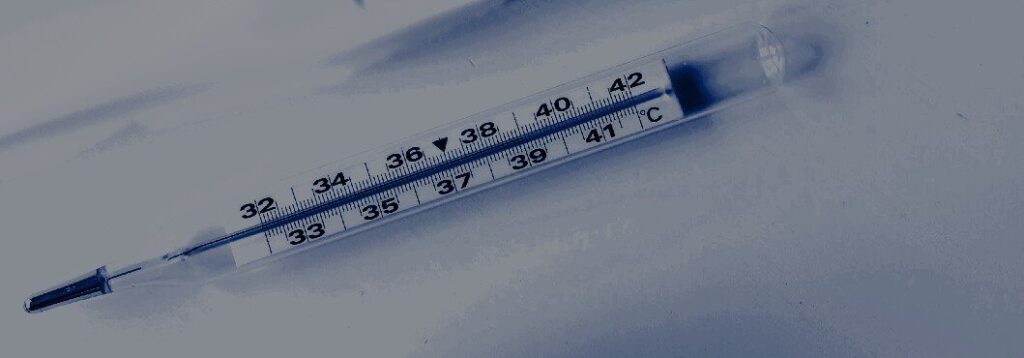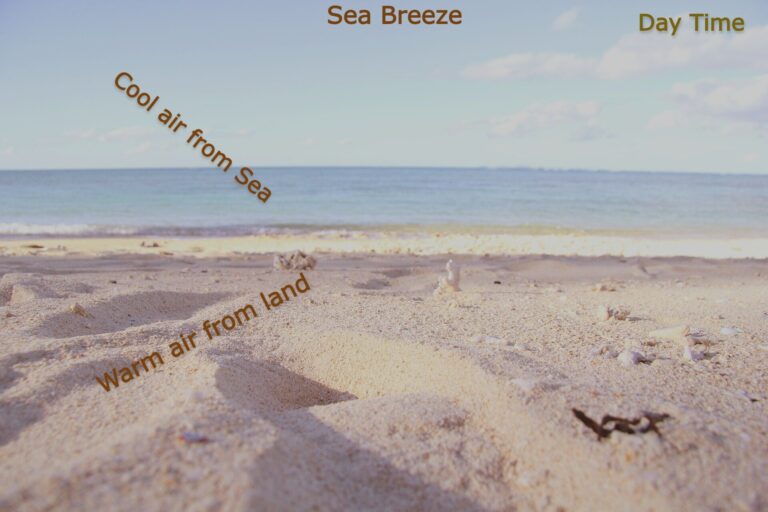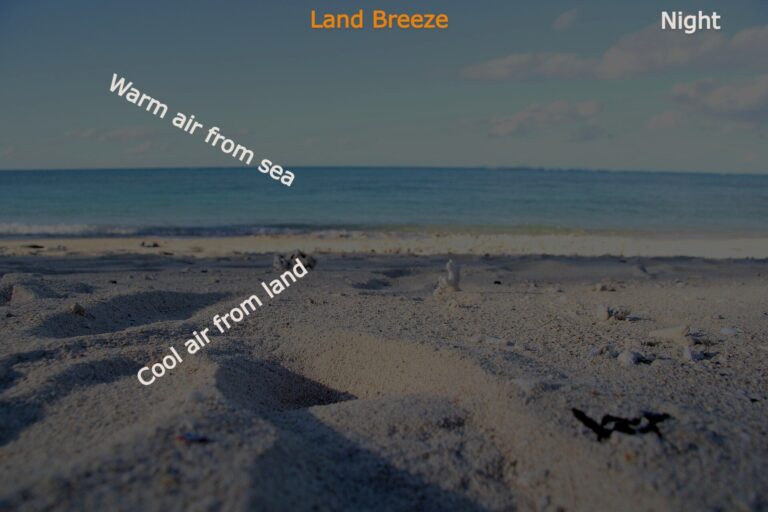Heat Class 7 NCERT Science Book Notes
What is heat?
Heat is a type of energy that can move from a hot body to a cold body. Because heat is a type of energy, the SI unit for heat is also joules (J), which is defined as the quantity of energy required to increase the temperature of a given mass by one degree.
What is Temperature?
The temperature of anything refers to how hot or cold it is. The temperature of an object can also be used to measure how hot it is.
MEASURING TEMPERATURE
How are temperatures measured and define Thermometer?
The temperature is measured using a tool called a thermometer. The scale on a thermometer is used to read the temperature; for example, the scale on a laboratory thermometer (described below) is marked down the length of the thermometer’s tube between the marks of 0° and 100° into 100 equal divisions. Thus, a degree is used to describe each division. The degree Celsius (°C) scale is the most widely used to measure temperature.
Types of Thermometer:
Thermometers can be found in a number of shapes and sizes, depending on its intended usage or purpose. Let’s examine each individually.
Clinical Thermometer
What is clinical thermometer?
A clinical thermometer is one that is used by doctors in hospitals and at home to assess just human or animal body temperature.
Typically, a long, narrow glass tube that functions as a clinical thermometer has a mercury-filled bulb at one end. A shining mercury thread that can be seen running along the thermometer’s scale makes it simpler to take the reading. The Celsius scale, denoted by the symbol oC, is the one used in India.
What is the average human body temperature?
The normal temperature for an adult or human body is 37∘C.
What is the range of clinical thermometer?
The range of clinical thermometer is from 35∘C to 42∘C.
How to check temperature with thermometer?
The thermometer bulb is held for a minute below the tongue in order to take the reading. For around 40 seconds, keep the thermometer in the same location. During measurement, readings will keep rising and the F (or C) symbol will flash. Typically, when the final reading is complete, the thermometer will beep (usually about 40 seconds).
Why does the mercury level in the thermometer tube not decline naturally?
A kink in the glass tube of a clinical thermometer prevents mercury from backing up into the thermometer bulb when the patient’s mouth is closed over the bulb. The mercury level in the thermometer tube cannot naturally decline due to this kink. As a result, even after taking the thermometer bulb out of the patient’s mouth, we can still read the patient’s accurate body temperature.

Use Of Clinical Thermometer
Can we measure the temperature of things other the human body with a clinical thermometer?
The temperature of anything other than a human body should not be measured using a clinical thermometer, we can use Laboratory Thermometer instead. It shouldn’t be kept near a flame or in the sun because doing so could cause it to crack. There are now mercury-free digital thermometers in use.
Which thermometer is used to check an animal’s temperature?
Animal body temperatures can be measured using a clinical thermometer.
Maximum-Minimum Thermometers
These are used to calculate the daily high and low temperatures. Parallel glass tubes with a U form is used to keep track of a location’s temperature.
These are the unique thermometers that automatically record the day’s high and low temperatures. The maximum-minimum thermometers take measurements of the last day’s maximum and minimum temperatures, which are then broadcast in weather reports on TV and in the media.
Laboratory Thermometer
All objects other than a human body are measured using lab thermometer. It is made out of a straight, long piece of glass with a mercury bulb at the end. For checking boiling points, freezing points, etc., this instrument typically used in laboratories.
What is the range of Laboratory thermometer?
This thermometer’s range is 10 to 110 degrees Celsius.
Digital Thermometer
The majority of commonly used thermometers, such as mercury thermometers, operate by using a liquid metal called mercury. If a thermometer breaks, it is exceedingly difficult to appropriately dispose of the mercury because it is toxic (poisonous). Therefore, the use of mercury in thermometers is a major source of worry. Additionally, mercury-free digital thermometers are now readily available.

Transfer Of Heat
The flow of heat stops when the two objects reach the same temperature. Accordingly, if the temperatures of two things are equal, no heat will be exchanged between them.
Types Of Heat Transfer
How does heat move?
The following are the three ways that heat can be transferred from a hot item to a cold one.
Using conduction method (in solid, heat is transferred by conduction)
Using convention method (in liquid and gases, heat is transferred by convection)
Using radiation method (in free space or vacuum, heat is transferred by radiation)
Conduction
What is conduction?
We can define conduction as the process by which heat is transferred from a hot material to a cold material by direct contact (without the transfer of the material in its entirety.). The process of conduction is used to transmit heat in all solids. Siemens per metre (S/m) is the SI unit for conductivity.
The top 3 examples of conduction
Applying ice on face, feet burning in warm water. A hot piece of iron is used to strike water to bring it to a boil.
Conductors and Insulators
What are conductors of heat give examples?
Heat conductors are substances that easily let the flow of heat through them. Heat is well-conducted by certain metals, including copper, silver, iron, aluminum, etc.
What is an Insulator of heat give examples?
The materials that do not allow heat to pass through them easily are considered poor heat conductors and known as heat insulators. Heat is insulated by glass, wood and plastic. Air and water, or the majority of liquids, are poor heat conductors.
Examples of Good and Bad Conductors of heat
Why is wool warmer than cotton?
We typically dress in wool during the cold months. The wool fibers have significantly more space between them when compared to cotton clothing. These are filled with air, a poor heat conductor. As a result, wool and air combined act as insulators to stop the heat from our bodies from escaping.
How to stop ice from melting?
Jute and sawdust are also poor heat conductors. To keep the ice from melting and absorbing heat from the environment, we cover it with a jute cloth and sawdust.
In refrigerator why are insulators used?
The two walls of refrigerators with interior spaces that are filled with insulating material keep outside heat from entering the refrigerator’s interior.
Why does the temperature of different materials vary in the same environment?
Two items can occasionally be at the same temperature. They appear to be at various temperatures—one is frigid, the other is warm. This occurs as a result of the fact that some materials effectively transfer heat while others do not. For instance, a wooden object in the same room during the winter feels warmer to the touch than a metal object stored there. A metal object is a good heat conductor. Therefore, when we contact a metal object, it swiftly conducts heat away from our hand. Our hand feels cold as a result of the heat loss. On the other hand, because wood is a poor conductor of heat, the wooden object feels warmer to the touch because our hand’s heat cannot leave.
Convection
What is convection?
Convection is the process by which heat is transferred from the hotter to the colder sections of a fluid (liquid or gas) by the movement of the fluid (or gas) itself. The heat is transferred inside the fluid during convection. Convectional heat transmission is only possible in gases and liquids.
As a result, because solid particles are fixed in place and are unable to move freely, heat cannot be transferred through convection in solids. Additionally, it cannot have happened in a vacuum or empty space since there are no particles of any kind in an empty area that can move and transfer heat.
Convection in Water
The conductivity of heat via water is weak. As a result, it can only transport heat through convection rather than conduction.
Convection in the Air
Air is a very poor conductor of heat; convection is the method by which heat is transferred from the hotter to the colder sections of the air.
What is sea breeze and land breeze?
Sea Breeze
The land warms up more quickly during the day in coastal places (where land meets ocean). The hot air rises because land air heats up more quickly than sea air, which is cooler and heavier.
At that point, the warm air from the land goes to the sea to complete the cycle while the cool air from the sea blows in to take its place. The sea breeze, also known as the onshore breeze, is the breeze or wind that blows from the sea toward the land.

Land Breeze
At night, the exact opposite occurs. At night, as the land cools more quickly than the water does, there is a low pressure above the sea, causing the cool air to move in to replace the warm sea air. The word “land breeze” or “offshore breeze” refers to the cool air, breeze, or wind blowing from the land toward the sea.

As hot air rises, cooler, denser (heavier) sea air rushes to fill the void or space. As a result, the wind is from the sea during the day and from the land at night.
What causes a land breeze and a sea breeze to exist?
The ability for heat absorption and retention varies between land and water. As a result, the air above them becomes either lighter or heavier. The heavier, colder air moves toward the lighter, hotter air, creating a breeze in the process. Therefore, it is the cause of both the land breeze and the sea breeze.
What part does convection play in land breeze and ocean breeze?
Because land and ocean heat up at different rates, sea breezes often occur during hot, summer days. The land surface warms up more quickly than the water surface during the day. The air above the land is therefore warmer than the air above the sea.
Which occurs first, conduction or convection when water is boiling?
Water that is boiling uses both conduction and convection. The water at the bottom of the container receives heat from the heat source by conduction and from the water itself through convection.
Radiation
What is radiation?
Radiation is the process by which heat energy is transferred from a hot body to a cold body using heat rays without the use of a material medium in between. For example, the sun’s heat is transferred to the earth by radiation. Since the sun and the earth are separated by a large empty space (vacuum), it takes a long time for the sun’s heat to reach the earth. This is caused by the sun’s intense heat, which radiates heat energy in the form of infrared rays everywhere.
There are several instances in daily life where heat is transported by radiation through air, such as Our body radiates heat into the environment or absorbs heat from the environment depending on the temperature of the surrounding area.
A hot object filled with hot milk that is kept away from the flame cools down by radiating heat into the environment.
We will experience the heat of the fire dropping on our faces if we are standing close to a burning fire. Radiation is the mechanism through which the heat from the fire is conveyed to our faces.
Clothes
People prefer to wear white or light-colored clothing on warm summer days because these colors absorb less heat from the sun and help us stay cool and comfortable. On cool winter days, however, people prefer to wear dark clothing because it absorbs more heat from the sun and help us stay warm.
We can therefore conclude that dark objects absorb heat and emit less heat than light ones. That helps our body to keep warm.
Heat radiation is a property of all heated bodies.
Absorption Of Heat
The heat that the objects radiate is reflected and absorbed.
The object’s temperature rises as a result of the heat.
Dark absorb have the ability to absorb heat. In order to walk outside in the sun, we utilize a black umbrella and feel comfortable wearing them in the cold. We find it relaxing to dress in light colors in the summer since they reflect heat.
In the winter, we dress in wool. Despite the fact that wool is a poor conductor of heat, it may trap air between its fibers, which is also a poor conductor of heat, keeping us warm by preventing our body heat from escaping into the environment.
